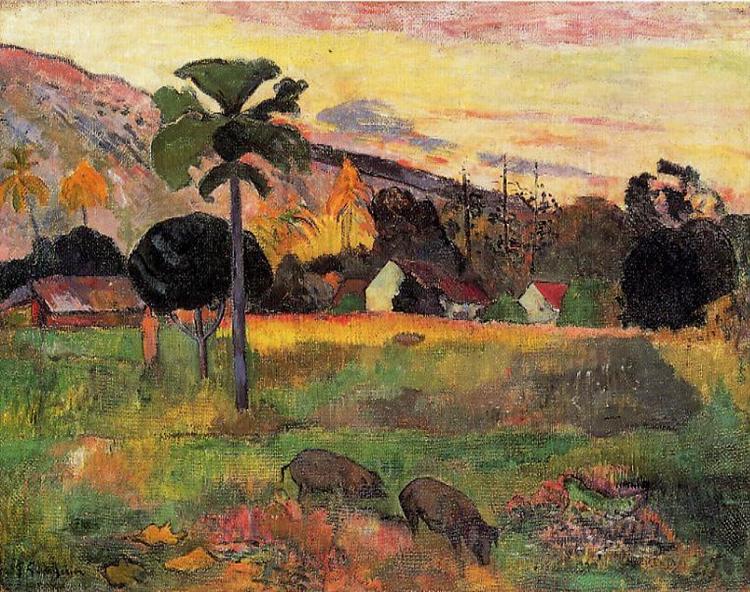描述
Paul Gauguin's painting "Come Here", painted in 1891, is a moving work that encapsulates the transition the artist experienced in his search for the primitive and the spiritual. In this work, Gauguin, who had moved to Tahiti, explores the interaction between humans and their environment, imbuing it with deep and sensual symbolism.
The composition presents a woman sitting in a relaxed position, semi-inclined towards the viewer, while, in the foreground, a large flower occupies the lower part of the work. This floral element becomes a symbol of tropical exuberance and an ideal of beauty that Gauguin himself valued. The woman, with her warm-toned skin, seems to demand an intimate and suggestive bond with the viewer. Her gaze is penetrating and reflective, and her simple attire gives her an exotic air that is far removed from Western conventions.
The use of colour is one of the most captivating aspects of the work. Gauguin uses a vibrant palette, with deep blues and bright yellows contrasting with the warm ochres and browns of the central figure. This choice of colour is not accidental; it reflects his desire to capture the essence of life in the Pacific, as well as his inclination towards the symbolism that underlies the chromatic choices. The colours do not simply describe a scene, but evoke emotions and moods, creating an almost dreamlike atmosphere.
Gauguin does not simply portray figures, but turns them into vehicles for exploring themes of desire and spirituality. In Come Here, the woman is not simply a portrait, but a manifestation of what Gauguin saw in his Tahitian experience. The work echoes the artist's search for an art that transcends mere representation and enters the realm of the symbolic and the emotional. By evoking this type of relationship, a direct exchange is established with the viewer, instigating a reflection on art, beauty and human nature.
Furthermore, the figure's inclination and position in front of the viewer are presented as an act of invitation, a call to be part of its world. This interaction between the figure and the viewer, palpable in the gaze and the posture of the body, is a distinctive feature of Gauguin's style, which moves away from the most academic and formal art history. In his work, each element suggests an emotional charge that invites new interpretations, conceived from the viewer's sensitivity.
Come Here can also be seen as part of a series of works in which Gauguin explores the female figure in exotic and often energetic contexts. The work is a reflection of his fascination with Tahitian life, although it is also marked by the complexities of colonization and the culture shock of his time. In this context, the work becomes a document that transcends its time, inviting the viewer to explore the duality between criticism of Western modernity and the search for an aesthetic ideal that celebrates authenticity.
Thus, Come Hither remains a key piece in the evolution of modern art, demonstrating Gauguin's ability to fuse form and color in a meaningful dialogue. At the crossroads of cultures and through a style that encouraged evocation rather than narrative, Gauguin's work resonates with shades of mystery and beauty that continue to leave a lasting mark on art history.
KUADROS ©, a famous painting on your wall.
Hand-made oil painting reproductions, with the quality of professional artists and the distinctive seal of KUADROS ©.
Painting reproduction service with satisfaction guarantee. If you are not completely satisfied with the replica of your painting, we will refund 100% of your money.

